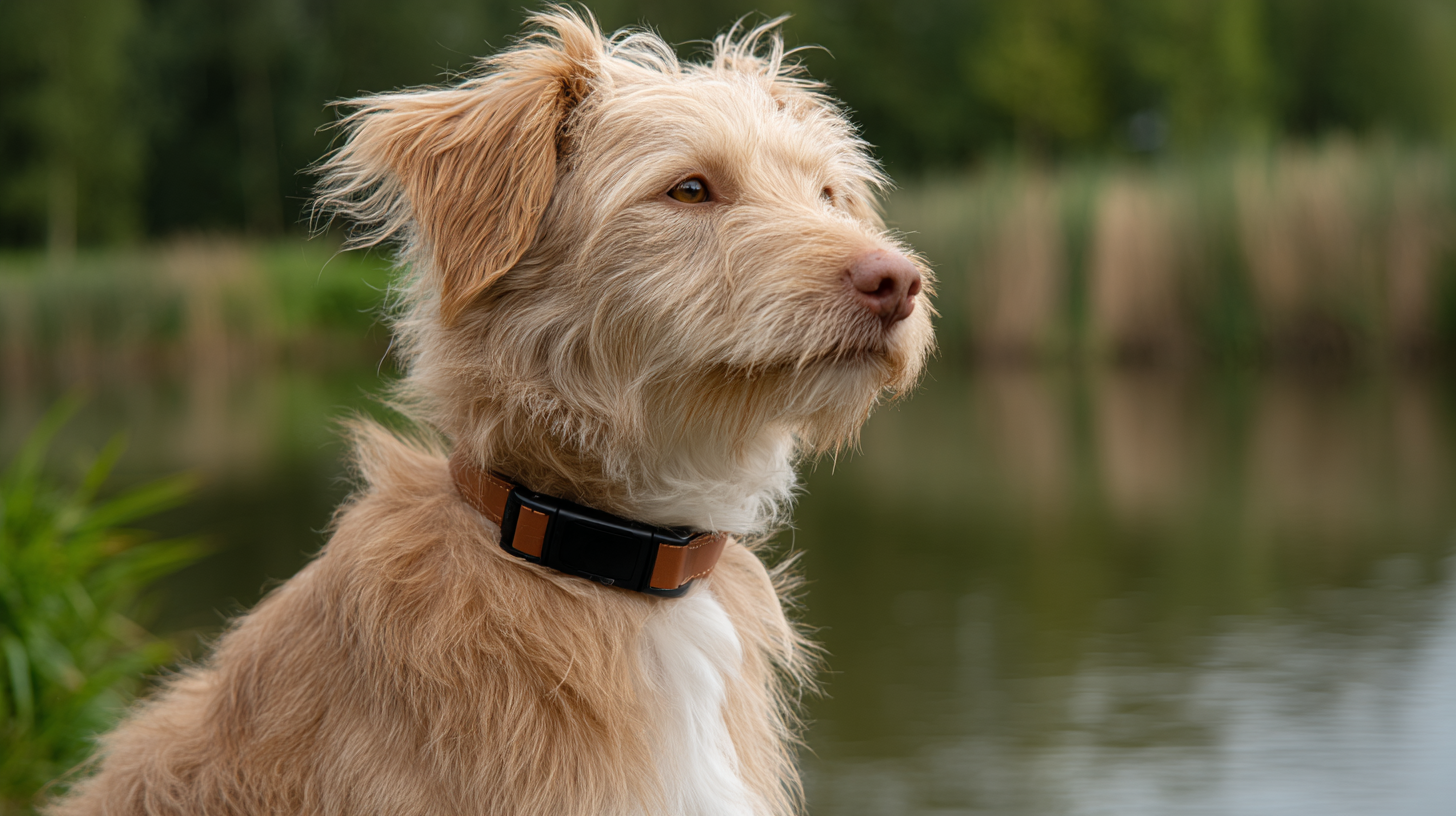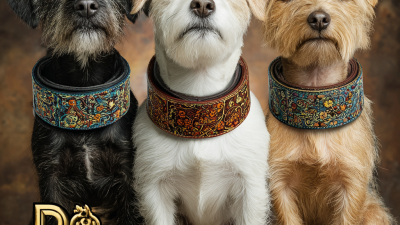$0.00
Choosing the right dog collar is an essential aspect of responsible pet ownership, as it plays a crucial role in ensuring the safety and comfort of your beloved canine companion. With a wide variety of dog collars available on the market, understanding the different types, materials, and safety features is paramount for making an informed decision. From traditional nylon collars to more advanced options like Martingale and training collars, each type serves a specific purpose and caters to the unique needs of dogs of various sizes and temperaments.

Moreover, the materials used in dog collars can greatly affect durability, comfort, and wearability, making it important to consider the lifestyle of both the owner and the pet. This comprehensive guide will explore the key attributes of dog collars, helping you choose the best option that not only fits your dog's needs but also complements their personality. By equipping yourself with the right knowledge, you can ensure that your dog enjoys both style and safety on every walk.
When selecting a dog collar, it's crucial to understand the various types available, as each serves distinct purposes and suits different dog behaviors.
Traditional flat collars are the most common choice, ideal for daily wear and identification tags. They come in a range of materials, colors, and sizes to match your dog's personality.
However, for dogs that pull during walks, a martingale collar can be an excellent alternative, offering a gentle tightening action to prevent slipping while remaining comfortable.

When selecting a dog collar, flat collars are among the most common choices for pet owners. These collars are typically made from materials such as nylon or leather and feature a simple buckle design for easy adjustments. One of the key benefits of flat collars is their versatility; they can be used for daily walks, training, and even holding identification tags. Additionally, flat collars come in various colors and styles, allowing you to express your dog's personality while ensuring comfort and functionality.
Tips for choosing the right flat collar: Always measure your dog’s neck accurately before purchasing, as a proper fit is crucial for both comfort and safety. Opt for collars with a quick-release buckle for easy removal in case of emergencies. Regularly check the collar for wear and tear to prevent it from breaking and potentially slipping off your pet's neck.
While flat collars are suitable for most dogs, it's important to consider your dog's behavior and needs. For example, if your dog tends to pull on the leash, a flat collar may not provide enough control. In such cases, exploring alternatives like harnesses may be beneficial. Overall, understanding the features and benefits of flat collars can help you make an informed decision for your beloved furry friend.

When it comes to selecting a dog collar, the Martingale collar stands out as an effective choice, especially for dogs prone to slipping out of their collars. According to a 2021 report from the American Kennel Club, around 30% of pet owners have experienced their dogs escaping due to improperly fitting collars. Martingale collars are designed to tighten slightly when pulled, preventing escape while providing comfort. This makes them particularly suitable for sighthounds and other breeds with slender necks that can easily slip out of traditional collars.
In addition to their escape-prevention capabilities, Martingale collars offer safety advantages. A study published in the Journal of Veterinary Behavior indicated that collars which distribute pressure evenly can reduce the risk of injury to a dog's trachea. With materials ranging from nylon to leather, they can be both durable and stylish. As dog owners increasingly prioritize safety and comfort, Martingale collars are gaining popularity, showing that investing in the right collar can significantly enhance the walking experience for both dogs and their owners.
This chart displays the popularity of different types of dog collars among owners. Martingale collars, known for their safety features for escape artists, represent a significant portion of the market alongside traditional flat collars.
When considering how to best secure your dog, it's essential to weigh the advantages of harnesses versus collars.
Collars are often the first choice for many pet owners due to their simplicity and ease of use. They provide a convenient way to attach identification tags and are less cumbersome for short walks.
However, collars can pose risks for certain breeds, especially those prone to respiratory issues or neck injuries, as they put pressure on the neck when the dog pulls.
Harnesses, on the other hand, distribute pressure more evenly across the dog’s body, making them a safer option for dogs that tend to pull or are still in training.
They come in various styles, including front-clip and back-clip options, allowing for greater control during walks.
Additionally, harnesses can provide extra support for older dogs or those with mobility issues.
Ultimately, the choice between a harness and a collar will depend on your dog's size, behavior, and specific needs, ensuring that every walk remains both
comfortable and secure.
When selecting a dog collar, safety features should be a top priority. Collars must be designed to prevent accidents and injuries while still being comfortable for your pet. According to a study by the American Society for the Prevention of Cruelty to Animals (ASPCA), improperly fitted collars can lead to injuries or discomfort, emphasizing the need for adjustable options. Features such as reflective materials can enhance visibility during nighttime walks, significantly reducing the risk of accidents.
Tips: Always measure your dog's neck before purchasing a collar. A collar should be snug but not too tight; you should be able to fit two fingers between the collar and your dog’s neck. Additionally, consider collars with quick-release buckles, which can provide an extra layer of safety in case of emergencies.
Another critical safety feature is the breakaway or snap-release design that can prevent choking incidents when a collar gets caught on something. In fact, a survey conducted by the Association of Professional Dog Trainers suggests that 30% of dog owners have experienced a collar-related injury with their pets. Choosing collars with these safety mechanisms not only gives pet owners peace of mind but ensures a safer experience for dogs during their daily activities.
Tips: Regularly inspect your dog’s collar for wear and tear. If you notice fraying or damage, consider replacing it to avoid potential hazards.
| Collar Type | Material | Safety Features | Best For |
|---|---|---|---|
| Flat Collar | Nylon, Leather | Quick-release buckle, ID tag holder | Everyday use |
| Martingale Collar | Nylon, Fabric | Gentle tightening, prevents slipping | Dogs with narrow heads |
| Harness | Nylon, Polyester | Even pressure distribution, reflective straps | Pullers, small breeds |
| Shock Collar | Plastic, Metal | Remote control, adjustable settings | Training, behavior correction |
| LED Dog Collar | Silicone, Nylon | Flashing lights, visibility in low light | Nighttime walking |





